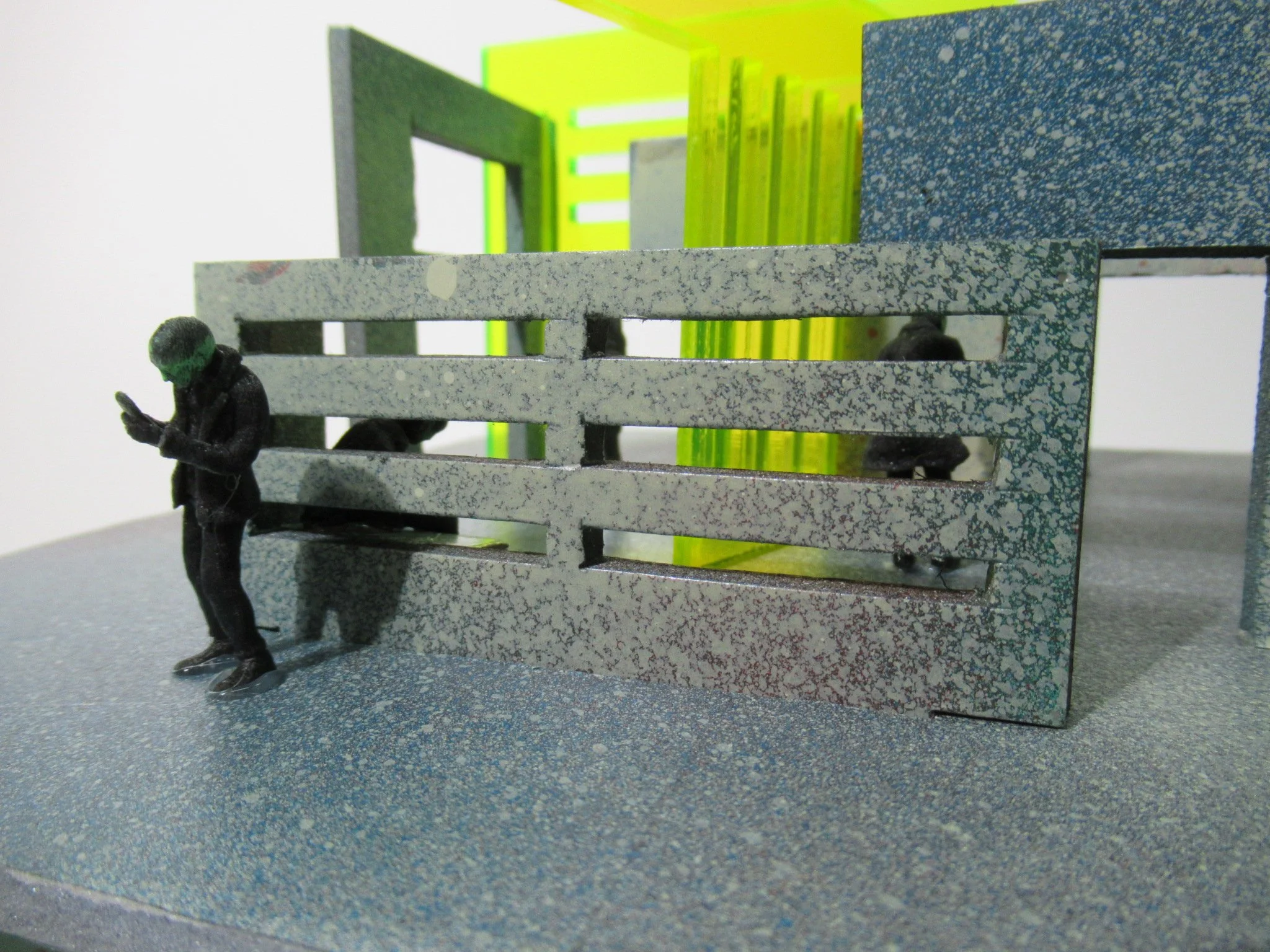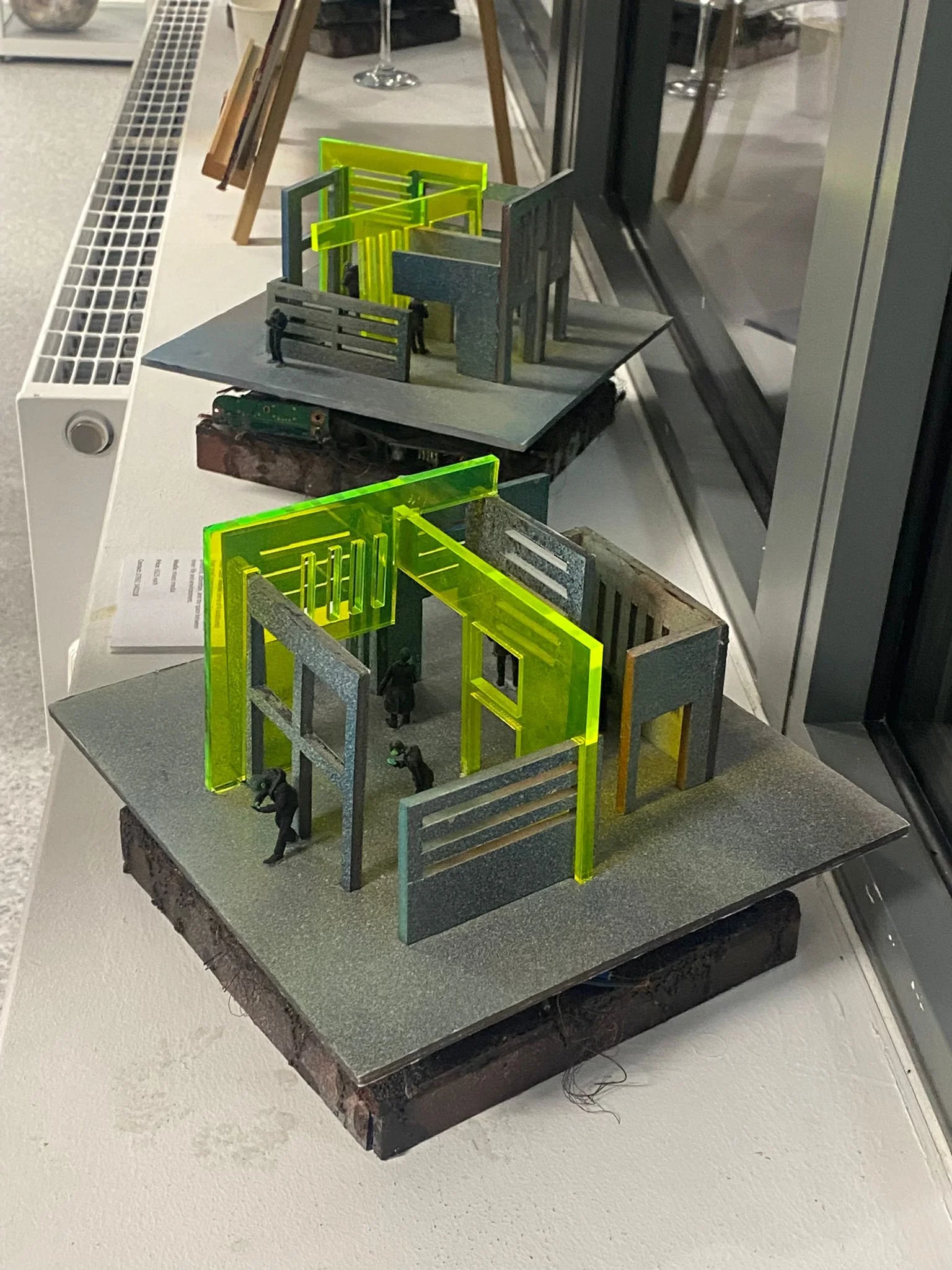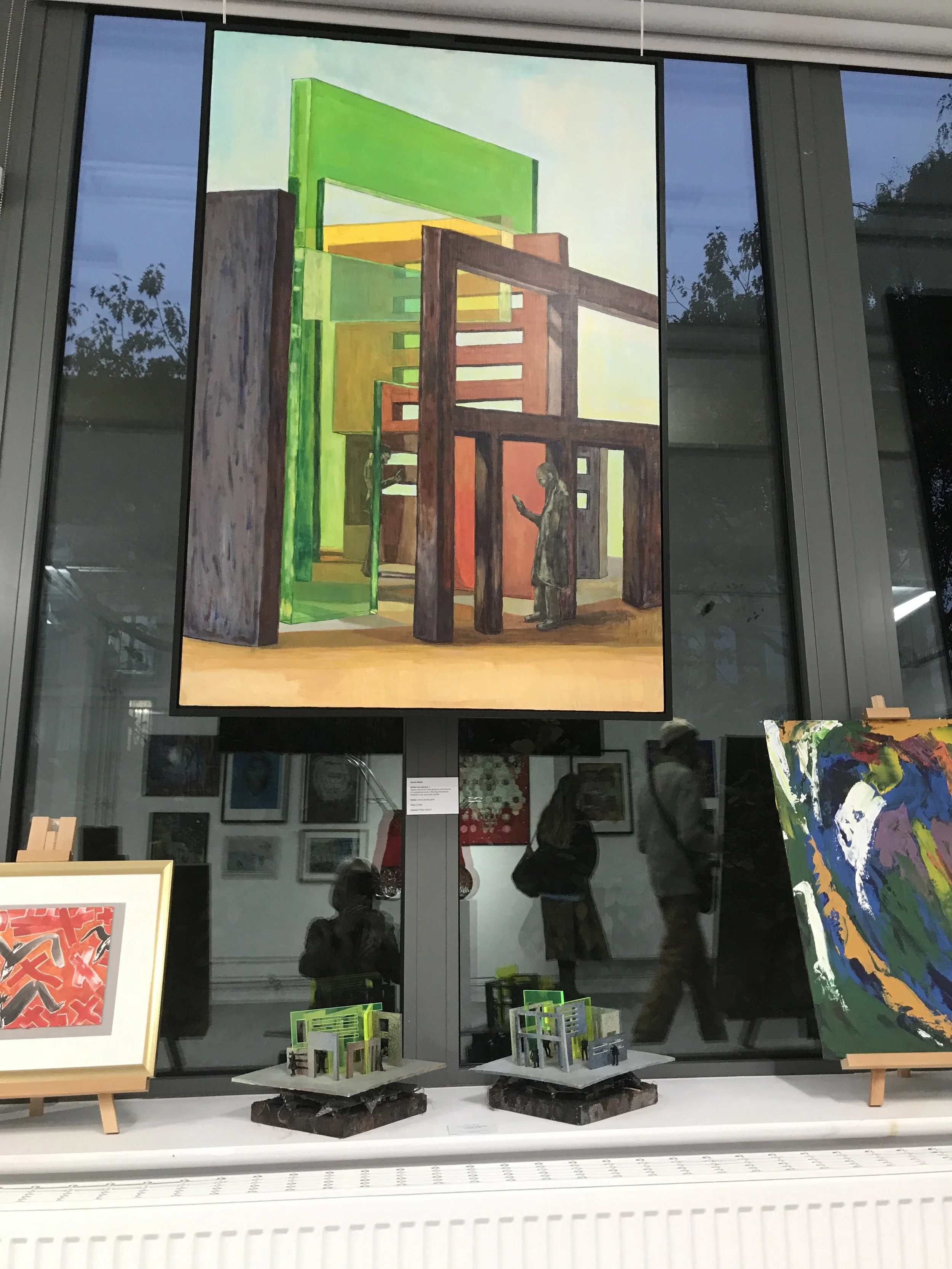
Inner-Outer Worlds is a multi-part sculptural installation that explores the relationship between connection, presence and perception in contemporary life. The work is composed of four interconnected micro-spaces, each inhabited by five figures—four standing, one seated; all engaged in a shared, meditative stillness. Their bodies are physically present, yet their attention is elsewhere.
Absorbed in the glow of their mobile phones, the figures suggest a dual state of awareness; internally focused, yet subtly attuned to the space around them. Gender-neutral and devoid of expressive gesture, they embody a kind of modern anonymity, shaped as much by architecture and behaviour as by form.
Cast in a single dark tone, the figures contrast with the bright screens they hold. Light from the devices reflects across their faces—brow, nose, cheekbones, chin; drawing attention to a quiet drama unfolding between the digital and the physical, the personal and the collective.
Suspended above an exposed basement filled with dense wiring and cabling, the installation reveals the invisible infrastructure that supports connection. This “technological underbelly” functions as another kind of inner world; hidden, essential and quietly alive. Just as the figures are guided by unseen signals, the installation is supported by an architecture of systems.
Each micro-space is defined by solid and translucent panels arranged in flowing, interwoven patterns. Perforated screens filter natural light and sound, creating subtle shifts in atmosphere from one space to the next. The architecture itself becomes part of the sensory field, offering a layered experience of enclosure, openness, and transition.
Structured within each square perimeter, the installation invites viewers to observe, navigate and reflect. It poses questions about how we inhabit space; how attention, technology, and design shape the way we exist together and apart.
Inner-Outer Worlds is both sculpture and system; a meditation on the quiet forces that define our inner lives, our external environments and the fragile line that connects them.
A structure. A system. A repetition.
Four rooms. Five figures. Four times.
Four standing. One seated. Each holding. Each looking. Each elsewhere.
Not male. Not female. Just there.
Present and absent. Still and alert.
Each inside something you cannot see.
They are with us, but somewhere else.
They are alone, but part of a group.
They are doing something familiar.
So familiar, we stop noticing.
Still bodies. Quiet spaces. Active screens.
A dark figure. A bright phone.
The light hits the brow, the nose, the cheekbone, the chin.
That’s where the other world shows.
These aren't portraits.
They're interfaces.
They're moments of interior traffic.
Architecture doesn’t hold them. It reacts to them.
Walls breathe. Screens filter. Light shifts.
Nothing is solid. Everything is partially seen.
Below them: the system.
Cables. Wires. Circuits. A technological basement.
A nervous system. A digital unconscious.
Out of sight, but always on.
The hidden supports the visible.
The unseen connects the seen.
The body uses the machine. The machine shapes the body.
Space is physical. Space is mental. Space is mediated.
Each structure is a container and a barrier.
Each figure is closed and open.
Each moment is public and private.
This is not sculpture as object.
It’s sculpture as condition.
You don't just look at it.
You're inside it.
Even when you're not.
Inner-Outer Worlds

Inner-Outer World_1 aerial view

Inner-Outer World_1 side view

Inner-Outer World_2 aerial view

Inner-Outer World_2 side view

Inner-Outer World_3 aerial view

Inner-Outer World_3 side view

Inner-Outer World_4 aerial view

Inner-Outer World_4 side view
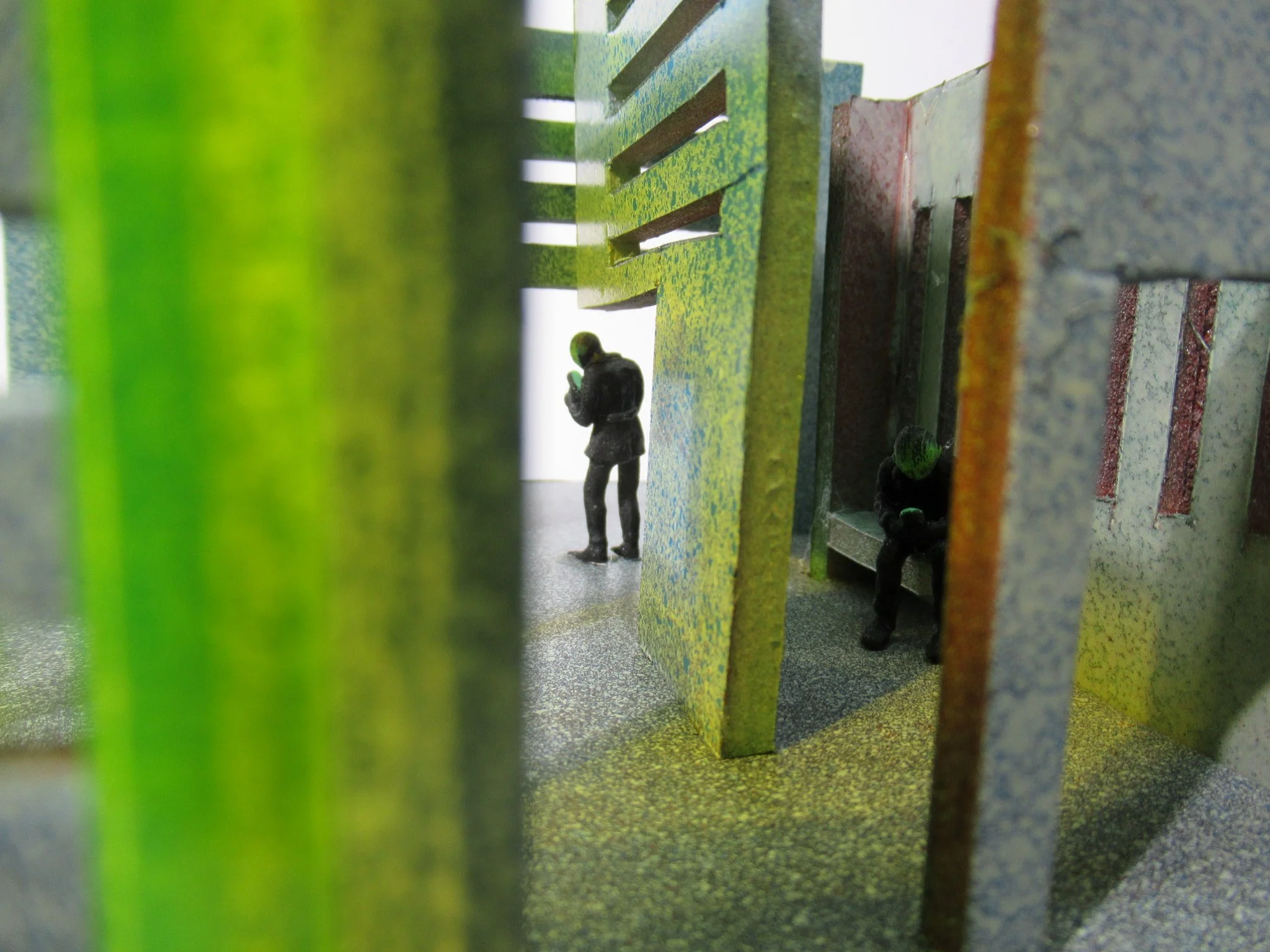
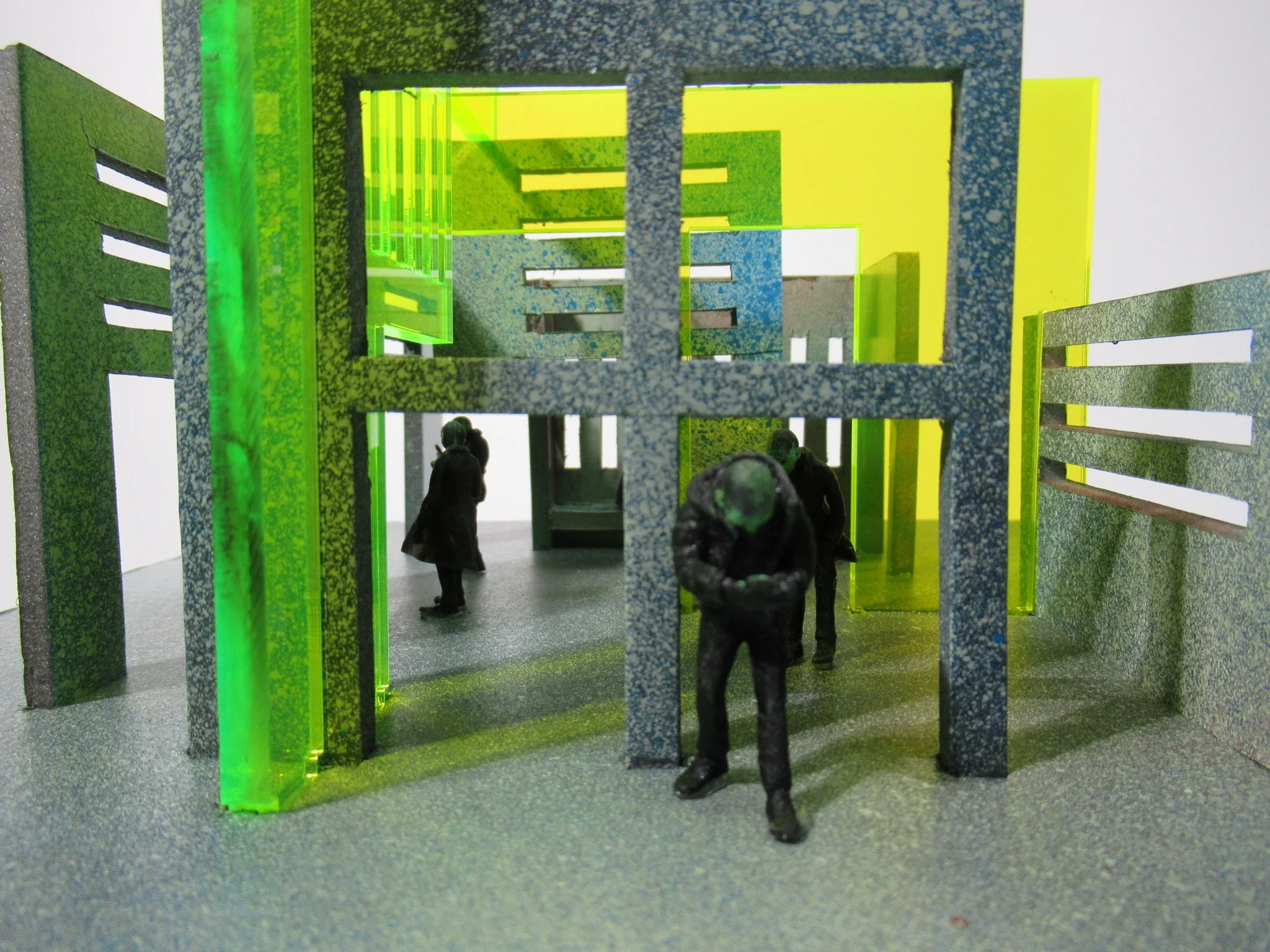
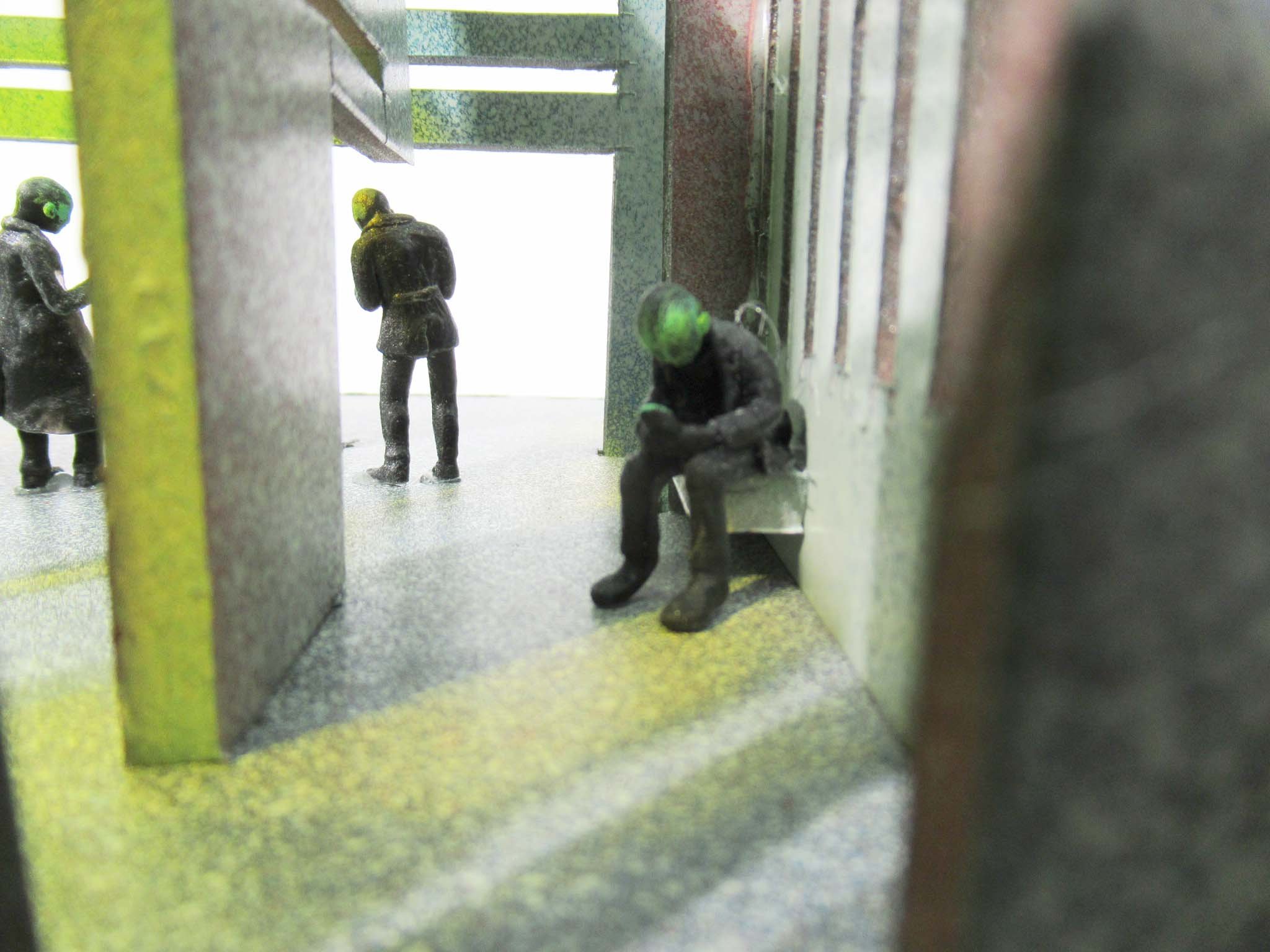
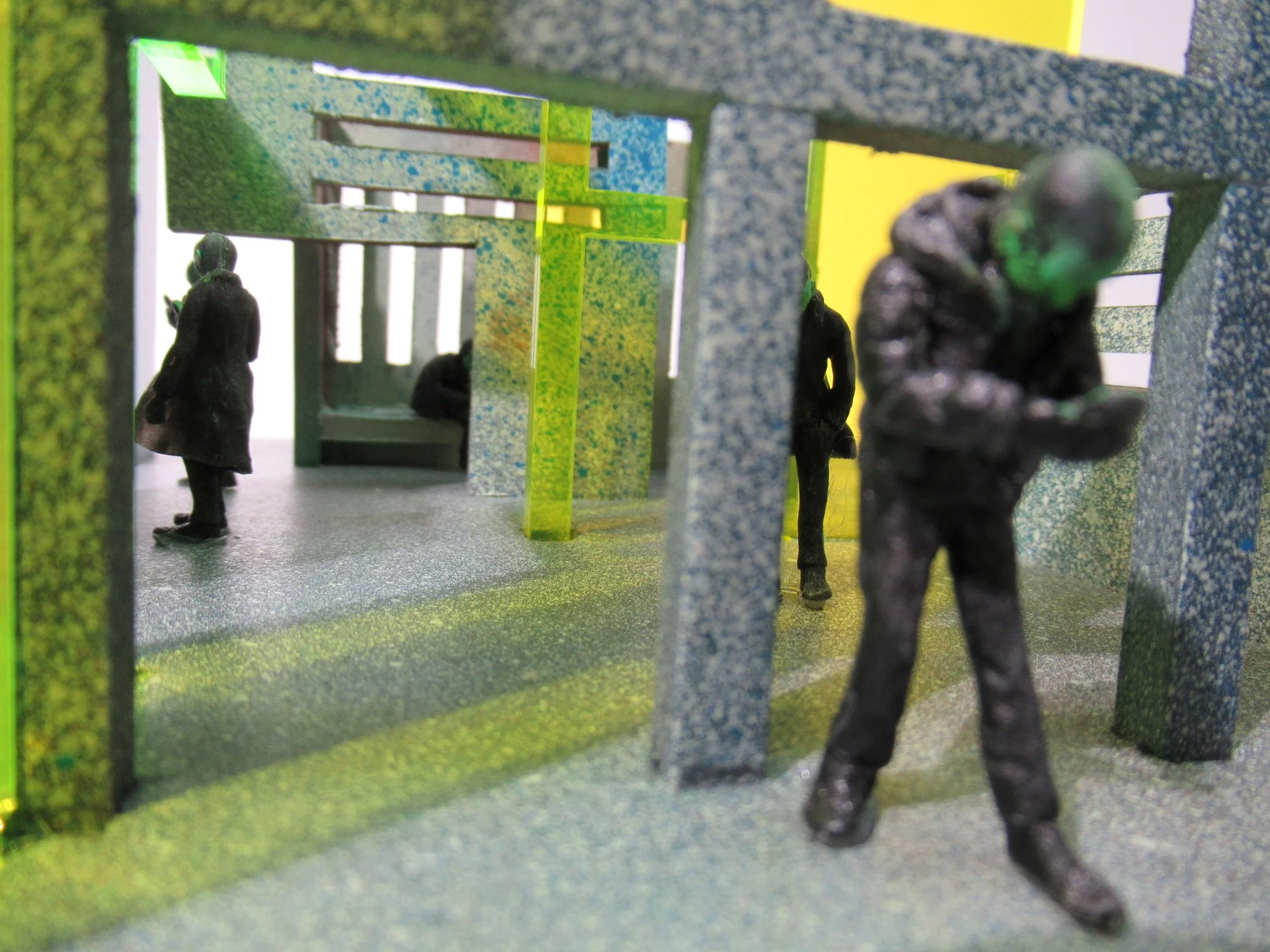
Views of figures within their 'inner-outer worlds', 3D printed in polyjet resin, hand-painted., tallest standing figure: 3.5cm
